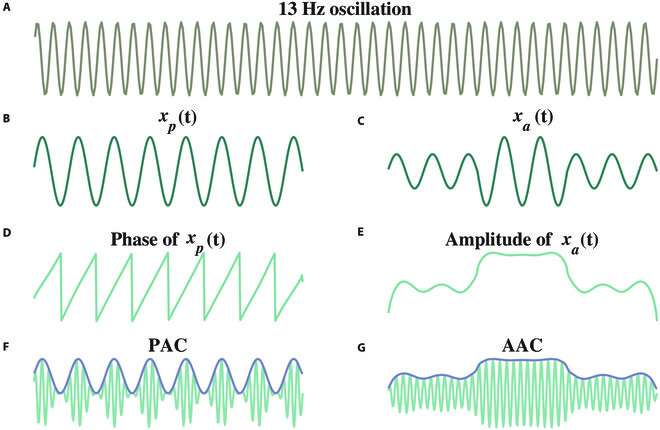This article has been reviewed according to Science X's editorial process and policies. Editors have highlighted the following attributes while ensuring the content's credibility:
fact-checked
proofread
Cross-frequency coupling could advance understanding of neural diseased states, enable therapeutic interventions

A review paper by researchers at the Beijing Institute of Technology has summarized recent advancements and challenges in the use of cross-frequency coupling (CFC) for neuroscience and cyborg and bionic systems (CBS).
The new review paper, published on May 31 in the journal Cyborg and Bionic Systems, provides an overview of the latest developments in CFC research, with emphasis on methodologies, neural mechanisms, and applications in CBS, especially clinical interventions.
"CFC has gained great interest as an investigative and translational tool in neuroscience for [...] association with physiological processing and pathological states," explained study author Chien-Hung Yeh, a professor at the Beijing Institute of Technology.
CFC supports advancing the understanding of the neurophysiology of cognition and motor control because it characterizes multi-frequency interactions and reflects how these coupled oscillations contribute to top-down neural transmission. CFC, and PAC in particular, provides relatively precise metrics of entangling temporal structure in neural circuits. Of note, to avoid methodological confounds in measuring CFC, the cycled-based permuted nonlinear approaches introduced in this review suggest a feasible path toward a more reliable CFC estimation.
The newly published review summarizes the latest studies on CFC in cognitive processes, and various neurological disorders, including but not limited to Alzheimer's disease, epilepsy, and Parkinson's disease, plus discussions over the potential neuromodulation techniques for clinical interventions. For example, in Alzheimer's disease, an early sign of neuronal dysfunction leading to cognitive impairments could be a reduction in θ-γ coupling between the hippocampus and prefrontal cortex. Interestingly, transcranial alternating current stimulation has been recently shown to modulate this coupling across the frontal-occipital regions, leading to enhanced performance in working memory tasks.
Looking forward, CFC can play a vital role in brain-computer interfaces (BCIs) by enabling more robust and accurate decoding of neural signals. By capturing the complex interactions between different frequency bands in the brain, BCIs can extract more detailed and informative features from neural activity, facilitating better control and communication between the human brain and external devices.
"The ultimate goal is to allow for more seamless interaction between the biological and artificial elements by unlocking the full potential of CFC," said Yeh.
However, there are still significant challenges to overcome in the application of CFC in CBS. One is the efficiency and reliability of evaluating CFC intensities without introducing clear delays or bias. Future research and development will likely precisely decode electrophysiological recordings and then translate CFC biomarkers into controls of CBS devices. Furthermore, these translation uses require rigorous testing and validation to ensure their safety, effectiveness, and reliability in real-world applications. These involve extensive testing and validation in pre-clinical and clinical settings, along with continued monitoring and optimization of CFC-based CBS over time.
"The research field of translating CFC findings into a cyborg and bionic system is still in its infancy," said Yeh, explaining that most studies focus on investigating the observation of changes in CFC relative to healthy control populations for monitoring disease progression and assessing therapeutic responses. CFC may offer a deeper understanding of the underlying entangling oscillatory mechanisms of neurological disorders. The review paper calls for researchers, medical professionals, engineers, and other experts to collaboratively marshal the research on CFC metrics into practical applications in CBS.
The research team includes Chien-Hung Yeh, Chuting Zhang, and Wenbin Shi from the Beijing Institute of Technology; Men-Tzung Lo from the National Central University; Gerd Tinkhauser from the Bern University Hospital and the University of Bern; and Ashwini Oswal from the University of Oxford.
More information: Chien-Hung Yeh et al, Cross-Frequency Coupling and Intelligent Neuromodulation, Cyborg and Bionic Systems (2023). DOI: 10.34133/cbsystems.0034


















